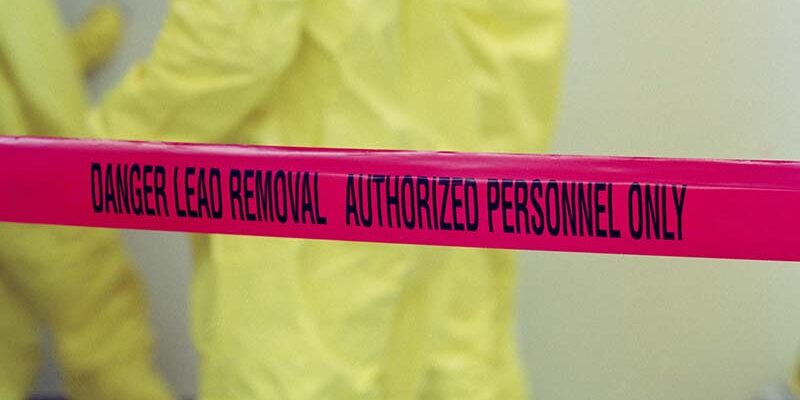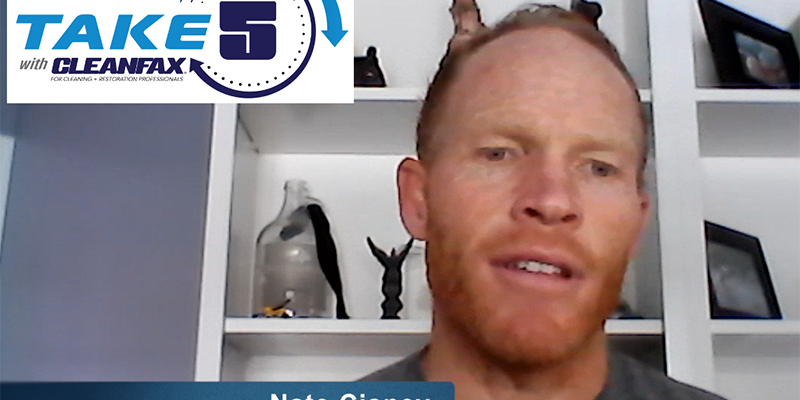Navigating Lead and Asbestos Treatments With the Right Technologies

By Josh Trowman and Mike Dekker
Asbestos and lead have been prime targets for remediation for decades. Both materials were widely utilized throughout the early- and mid-20th century and are commonly found in homes and buildings built prior to the 1970s.
Why? Put simply, they were effective building materials. Asbestos was deployed throughout the early 1940s through the 1970s as a highly effective and inexpensive fire-retardant material and thermal and acoustic insulator. Lead, meanwhile, has a much longer and deeper history as a paint additive, used to accelerate drying times and create a long-lasting finish.
Of course, we now know the inherent health hazards associated with these materials. Prolonged exposure to asbestos fibers can lead to lung disease, while a broad range of health problems can result from lead-based paint ingestion and inhalation. In the United States, the federal government banned consumer uses of lead-based paint in 1978; asbestos was banned just over a decade later in 1989.
The result is a significant market for abatement and removal services for lead and asbestos, and it’s part of a larger trend of growing remodeling demand for older homes in the country. Consider that 38% of homes in the U.S. were built before 1970. Meanwhile, the median age of homes in America is 40 years, five years before the federal asbestos ban.
For today’s construction, remodeling, and remediation professionals, there is opportunity to capitalize on demand for these services. But the right approach to a lead or asbestos abatement is not always immediately clear. In this article, we’ll discuss differing approaches to these services, as well as how to select the right products and solutions to complete abatement jobs effectively.
To keep or remove?
When it comes to abatement, both lead and asbestos present some significant logistical challenges when it comes to removal. The most pressing is simply that disturbing these materials has the effect of releasing their hazardous particles into the air; thus, careful and sometimes complex procedures must be strictly followed to ensure the health of both the contractor and the building occupants. Additionally, because lead and asbestos are federally regulated, removal professionals must also go through rigorous certification processes in order to legally perform these services.
As such, encapsulation—a process by which lead or asbestos is treated with a high-performance encapsulant, forming a barrier between the material and the environment—can be an attractive, efficient, and cost-effective alternative to complete removal. And while professional encapsulation service is almost always recommended, encapsulation can in some instances be performed by the homeowner themselves, provided they are equipped with the right tools for the job.
But encapsulation is not always appropriate or recommended; sometimes removal is the only option. Here are a few examples:
Lead-based paint. Abating lead-based paint is one of the best candidates for encapsulation treatment. This is true for a few reasons.
The first is that encapsulating lead paint that is in good condition—i.e., without significant degradation or chipping—is about as straightforward as a simple paint job. For professionals, lead paint encapsulation work is easy to predict, basic to perform, and nearly as effective as removal. This can be even more important as part of a larger or commercial abatement job.
Removal, by contrast, can be a challenge. Chemical products used to remove lead paint are often finicky and sensitive to temperature, often requiring multiple applications for successful and complete removal. Mechanical removal is also complex and time consuming. The building can also present unique challenges; one room might have more layers of paint than another room, creating more complexity and unpredictability while requiring more man hours to get the job done.
Again, there are scenarios where removal might be the only option. These include when the lead paint matrix is not adhered well. Even the best encapsulant technologies cannot properly save degraded lead paint.
Asbestos. Asbestos is often found in a wider variety of applications than lead paint. And while encapsulation can be an effective form of abatement in some of those applications, it is more common that asbestos must be removed.
Certified asbestos contractors will in most cases recommend removal as the most effective form of abatement, and many may not offer encapsulation services at all. Here, it’s important to utilize high-performance surfactant products that deliver desirable wetting, penetrating and coalescing of Asbestos Containing Material (ABM) to permit safe handling and removal of the materials under damp, dust-free conditions.
But there are several good targets for asbestos encapsulation. One area of opportunity is transite panels, commonly found on the exterior of commercial buildings. A high-performance encapsulant can be applied to these panels by a painting contractor.
Another application that might require an encapsulant is the removal of vinyl asbestos flooring tiles. The tiles themselves will typically be removed (encapsulants cannot handle foot traffic), but the material that kept the tiles adhered will inevitably have embedded asbestos fibers. Here, an encapsulant can be applied and a free-floating floor can be installed.
One final consideration for both asbestos and lead is that property transactions must typically record whether either of these materials are known to exist within the structure. Properties containing lead and asbestos, sometimes referred to as “hot,” might not be as attractive to potential buyers or could drive down the price. Prospective purchasers might also demand that removal of either material take place as part of the condition of a sale. This is a strong factor that could sway a property owner toward proactive removal.
Selecting high-performance products for encapsulation and removal
The key to success for any lead and asbestos abatement job involves the use of high-performance products. Whether you’re removing or encapsulating either hazardous material, the right products are required to deliver on the health and safety needs of professionals and building occupants.
Asbestos and lead abatement are important in the remodeling and renovation marketplace, helping to protect occupants from preventable health hazards. Demand for these services only stands to grow, and professionals should arm themselves with the right knowledge, resources, and product solutions to successfully complete these important jobs.
Josh Trowman is the director of sales for ICP Building Solutions Group-Environmental Restoration Group.
Mike Dekker is the New England & Mid-Atlantic sales manager for ICP Building Solutions Group-Environmental Restoration Group.
For more information, visit icpgroup.com.












